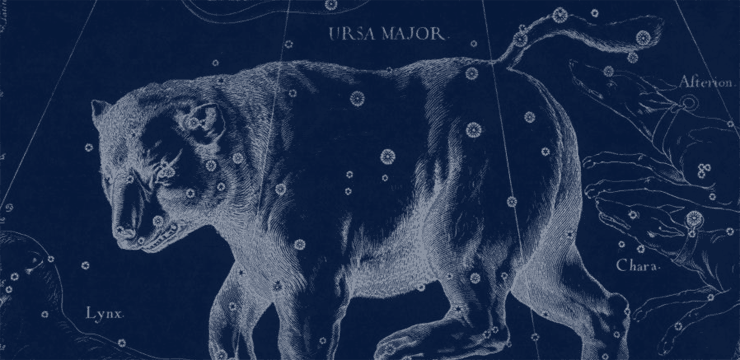October Constellations & Folklore
October 2011 :
Once again, the sign of the new season is beginning to make its way higher and higher in the sky. As October begins, the Great Square, symbol of fall, is getting easier to find in the southeast. As it rises, so does the rest of the constellation that the Great Square is a part of, Pegasus, the Flying Horse. Beginning at the Square, the star at the upper right is the end of his legs; the star at the lower right is the base of his neck. Follow it down, then crook upwards to his face. Legend has Pegasus as capable of flight, but his wings were so large there was no room for them in the sky, so they were cut off. Finally, notice the orientation of Pegasus - he's upside down, but still rather easy to identify.
Pegasus was involved in the rescue of the beautiful princess, Andromeda, the daughter of Cassiopeia and Cepheus. She was chained to the rocks in anticipation of being eaten by some type of sea monster. Exactly what the monster was is uncertain - some have it as a whale, as the large constellation Cetus, the Whale, is below Pegasus; others believe it might be Draco, the Dragon, but a fire-breathing dragon rising out of the waters is kind of hard to fathom. The movie, "Clash of the Titans," based on this legend, had a Kracken as the hungry beast. Whatever it was, it was waiting for Andromeda to be his appetizer.
Andromeda can be easily recognized, as her shape is her monogram, a long, slender letter "A," found by beginning the top of the A at the upper left of the Great Square. From that star, follow the line of stars away; then, above each of those stars is another line. At the second star of each line, draw a line between them. You've made the A.
If you follow the cross of the A up one more distance, you might be able to see a sight fuzzy blob. That blob is the farthest object visible to the naked eye, the Andromeda Galaxy, M31. It has been determined to be about 2.5 to 3 million light years away. Also, this was the first one recognized as a separate galaxy, as opposed to a part of our own Milky Way. The discovery of this object began a search for other similar objects. We now know M31 is one of over 400 billion galaxies in our universe, and counting.
As Andromeda was a damsel in distress, she of course needed a Prince Charming, and he is located right next door. Continue to the left, or east of Andromeda, and you will see the upside-down crooked "Y" shape of Perseus. In order to save the princess, Perseus had to kill the horrible Gorgon the Medusa, a creature so awful looking her mere glance would turn anyone into stone. Perseus had to kill this monster without looking at her. Luckily, he was gifted by the gods with a shield whereby he could capture her position, then, under a cloak of invisibility he was able to chop off her head and place it in a bag. He then jumped on Pegasus and flew to the water's edge, arriving just as the sea monster - whatever it was - came from under the water. At that moment, the monster heard his name called, and, looking up, saw a man reaching into a bag, then pulling out the head of the Medusa. Monster immediately turned into stone and sank to the bottom of the sea. Perseus then alit onto the water's edge, unshackled the lovely Andromeda, then the two jumped onto Pegasus's back, and they lived happily ever after.
At the end of Perseus's arm, just about where his hand is, is a star that our ancestors were actually afraid of, because it did what no other star they could see did: It changed brightness. All other stars were always the same, every time they were visible. Today we know that this star is one of two that orbit each other, one much dimmer than the other. As they revolve, the differing brightnesses of the two stars changes their appearance, from our perspective. Every three days, this star's magnitude undergoes a change of about 1.5. Our ancestors were so afraid of this star that they named it Algol, the Solitary, or Ghoul, star. Because of its position, this was thought to represent the head of the Medusa. In other words, you might not want to look too long at this star.
When to Observe
Constellations
Related Topics




